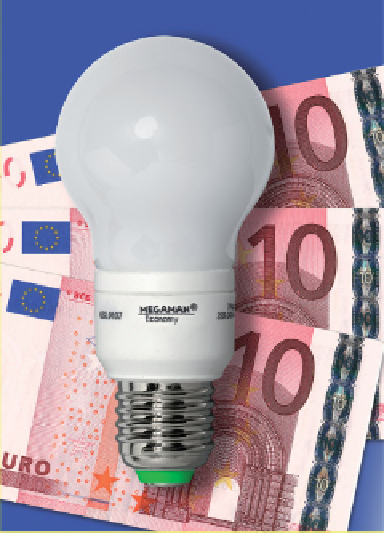Environmental Engineering Reference
In-Depth Information
or equipment, consumers should ask questions about open-circuit consumption
values so that more pressure is placed on manufacturers to fi t power - saving
switches.
Around 10% of the electricity used in private households in Germany is for lighting
(see Figure 3.4). In the USA the percentage is about the same. Here too a great deal
of energy, and money, is wasted. Due to inertia and unfounded prejudice against
energy-saving bulbs, millions of conventional electric light bulbs are still being
used. This is not only damaging the environment but also hurting the pocket.
Modern low-energy light bulbs produce the same amount of brightness using 80%
less electricity. An 11-watt low-energy bulb saves about one cent an hour. If this
kind of light bulb burns for two hours each day, the savings amount to seven euros
a year. Over its lifetime a low-energy light bulb can save 100 euros and 300 kg of
carbon dioxide. Therefore, the higher purchase cost is rapidly recouped. Good-
quality low-energy light bulbs also tolerate frequent on and off switching well. Tiny,
dimmable light bulbs open up possibilities to all kinds of uses (Figure 3.5). A con-
sistent approach to protecting the environment should include a gradual replacement
of all light bulbs with low-energy bulbs. However, there is a growing trend to fi t
halogen lights. In terms of energy consumption, these lights are only marginally
better than conventional bulbs and, consequently, not only expensive to buy but also
to use. Energy-saving LED lights continue to be improved and will offer a viable
alternative in the future.
Figure 3.4
Low-energy light bulbs
save energy, carbon dioxide and cash
and are now available in almost all
sizes and styles.
Photos: MEGAMAN,
www.megaman.de.

